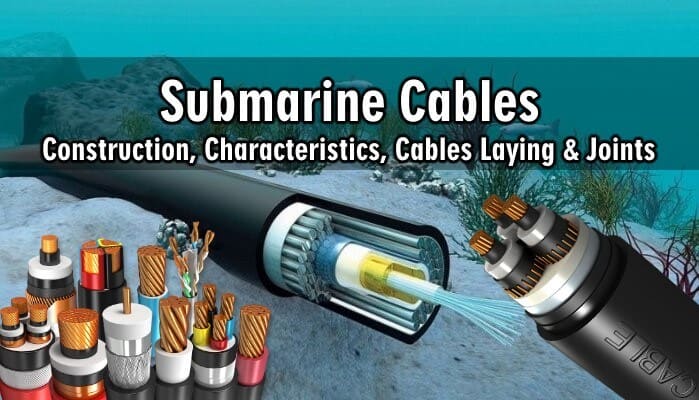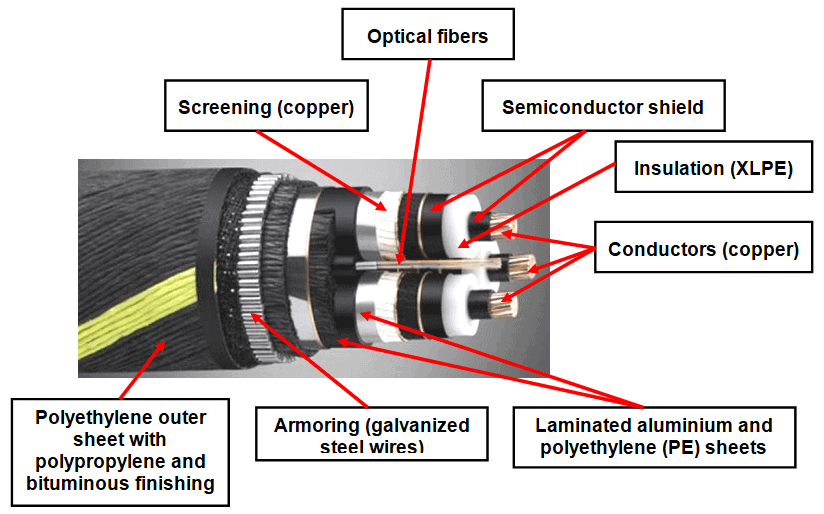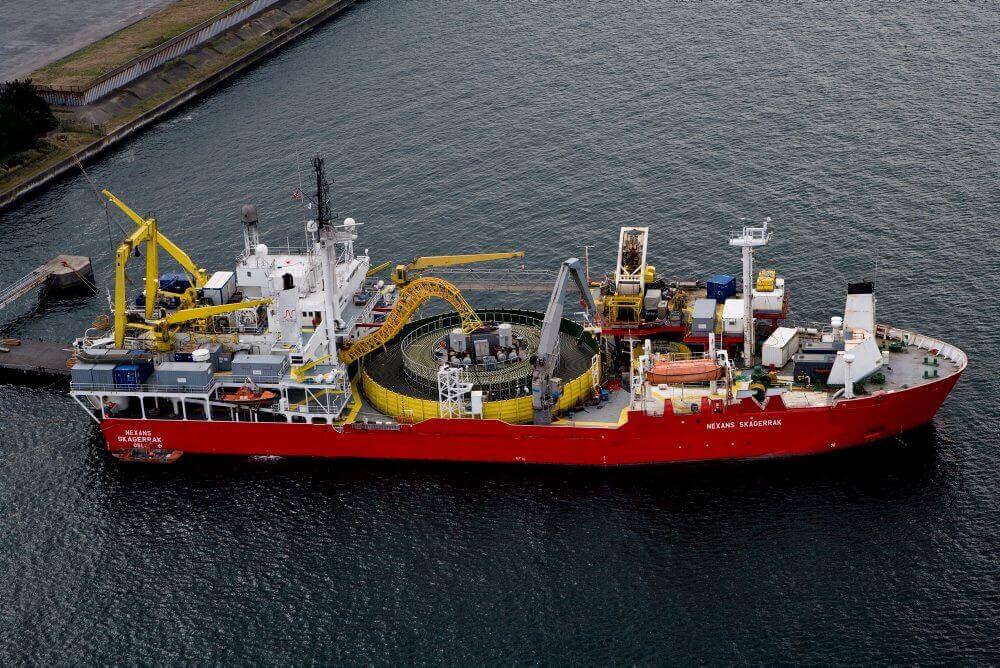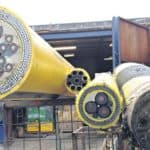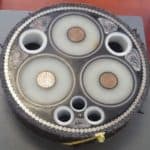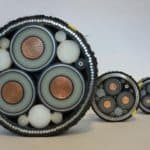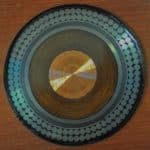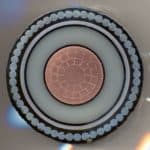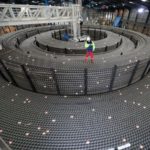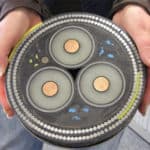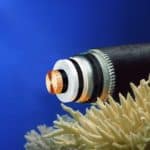Submarine Cables – Construction, Characteristics, Cables Laying & Joints
An Introduction to Submarine Cables & Subsea Power Cables
Introduction to Submarine Cables
The development of offshore wind farms and oil and gas offshore platforms requires the installation of power, control and monitoring and communications cables between the platforms and the main land.
For this purpose submarine cables are installed, which are also used for power and/or communications between islands and the main land, between countries and even between continents.
Characteristic of Submarine Cables
Submarine cables, that must comply with IEC Standard 60288[1], are specifically designed and manufactured to be installed underwater, laid at seabed, taking into account that seabed is rugged and rocky, that there are marine animals, which can damage the cables, and that is mandatory that cables must withstand tsunamis and volcanic activity, as well as trawls used by fishermen, that are more hazardous than the fish itself.
To establish the characteristics of a submarine cable is necessary to consider the following parameters:
- Ambient temperature (seabed and land).
- Burial depth.
- Particular burial/protection requirement at shore approach (deeper burial, directional drill pipe…).
- Axial spacing of cables.
- Thermal resistivity of seabed and land.
- Length of submarine cable.
- Water depths.
Typical rated voltages of power submarine cables are 3.6/6(7.2) kV to 290/500(525) kV, in AC systems, and higher in DC systems.
Depending of rated voltage and of the cross section (for DC systems manufacturers construct these cables with cross sections up to 2500 mm2 and for network rated voltage up to 725 kV) they may be multicore or single core.
- Must Read: Why Coaxial Cables are Highly Insulated?
Characteristics of Power Submarine Cables
Main characteristics of power submarine cables are:
- Conductor: Copper or aluminum. In case that the conductors are going to be used in long depths and if requested the conductor is sealed with special material which prevents the water penetration in case of cable damage.
- Insulation: XLPE, EPR or MIND (mass impregnated paper).
- Screening: Copper wires or tapes and lead sheath where required.
- Armoring: The protection of the cable from mechanical stresses is achieved by the armoring consisted of steel wires (for single core cables armoring must be of non-magnetic material – usually aluminum – to avoid overheating of armoring due to Foucault currents[2] – Joule effect), which provide also to the cables the required mechanical strength which during laying or pulling. The steel wires are of different categories of breaking load and they are heavily galvanized.
- Outer protection: The outer protection of the cable, according to the conditions and requirements of the installation, is achieved by PVC or PE sheath and layers of polypropylene yarns or jute.
Also read: Types Of Cables Used In Internal Wiring
Three-core power cables may also have optic fiber cables for communications, as shown in Figure 1
Figure 1 – Construction of Three-phase submarine cable
When single core power cables are used usually they do not include the optical fibers and in this situation is necessary to install also optical fiber submarine cables like the one shown in Figure 3.
Figure 2 – Optical fiber submarine cable
Some manufacturers include in the same submarine cable communications (optical fiber) and controls to subsea processing and boosting systems, whether requirements are for low voltage, medium voltage or high voltage power supply – umbilical cables (see Figure 3).
Umbilical cables may also include low and high pressure lines (steel tube) used for fluids.
Figure 3 – Umbilical cable
Basic Procedure for Submarine Cables laying
Laying a submarine cable is a remarkably complex, hazardous and expensive business.
Routes need to be surveyed, technology developed, the cable needs to be laid without being lost, broken or damaged.
Prior to install a submarine cable is necessary to undertake a series of actions:
- Choose the routing, using updated nautical maps.
- Evaluate the geological conditions of the chosen routing.
- Proceed to seabed identification, namely in what concerns bathymetry (depth), slope, existence of topographic incidents, lithology (seabed nature), environment conditions, such as saltiness, temperature and pH, and the dynamic movements that may exist at seabed (waves, sea currents, etc.) or that may affect it (tsunamis, volcanic activity, sludge currents, etc.).
Once the routing is chosen and all studies of seabed are completed, it is necessary to find if there any stretches were the cable needs to be buried (using a hydro jet burial machine) and to develop specific technologies to constantly survey the place where the cable is installed to avoid damages or cable loose.
Submarine cables is generally done by a cable laying ship, as seen in Figures 4 and 5, and robots may be used to control cable laying (see Figure 6).
Figure 4 – Cable laying ship
Figure 5 – Submarine cable laying
Figure 6 – Cable laying robot
Submarine Cable Joints
When submarine cable run is very long or if damage occurs in the cable it is necessary to install cable joints.
These cable joints, that are subjected to high pressures, are executed prior the cable installation in seabed (whenever possible at the manufacturer facilities), must be submitted to insulation and dielectric tests and also to ultrasonic and radiographic tests, in order to assure the reliability of the installation.
Figure 7 shows a phase of submarine cable joints.
Figure 7 – Execution of submarine cable joint
Gallery of Submarine / Subsea & Power Submarine Cables
You may also read:
- Insulation Resistance of a Cable | Why Cables are insulated?
- How to Find The Suitable Size of Cable & Wire for Electrical Wiring Installation
- Electrical Wire & Cable Size Calculator (Copper & Aluminum)
